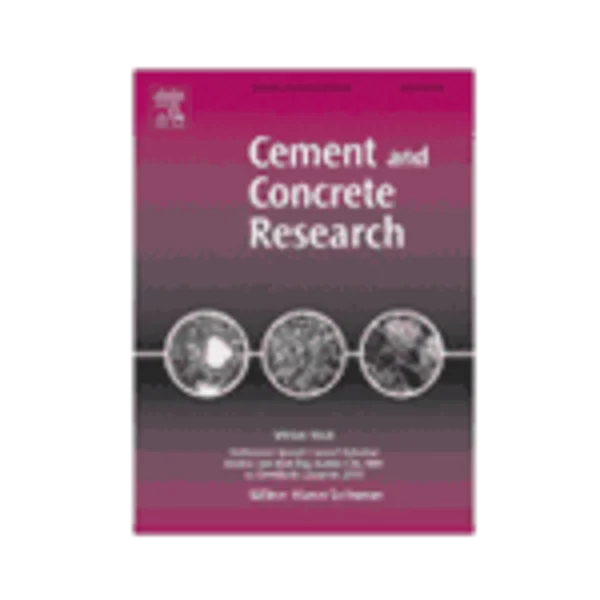-
numerical homogenization of concrete microstructures without explicit meshes
جزئیات بیشتر مقاله- تاریخ ارائه: 1392/07/24
- تاریخ انتشار در تی پی بین: 1392/07/24
- تعداد بازدید: 932
- تعداد پرسش و پاسخ ها: 0
- شماره تماس دبیرخانه رویداد: -
life management of electric hydro or nuclear power plants requires to estimate long-term concrete properties on facilities, for obvious safety and serviceability reasons. decades-old structures are foreseen to be operational for several more decades. as a large number of different concrete formulations are found in edf facilities, empirical models based on many experiments cannot be an option for a large fleet of power plant buildings. to build predictive models, homogenization techniques offer an appealing alternative. to properly upscale creep, especially at long term, a rather precise description of the microstructure is required. however, the complexity of the morphology of concrete poses several challenges. in particular, concrete is formulated to maximize the packing density of the granular skeleton, leading to aggregates spanning several length scales with small inter particle spacings. thus, explicit meshing of realistic concrete microstructures is either out of reach of current meshing algorithms or would produce a number of degrees of freedom far higher than the current generic fem codes capabilities.
this paper proposes a method to deal with complex matrix-inclusions microstructures such as the ones encountered at the mortar or concrete scales, without explicitly meshing them. the microstructure is superimposed to an independent mesh, which is a regular cartesian grid. this inevitably yields so called “gray elements”, spanning across multiple phases. as the reliability of the estimate of the effective properties highly depends on the behavior affected to these gray elements, special attention is paid to them. as far as the question of the solvers is concerned, generic fem codes are found to lack efficiency: they cannot reach high enough levels of discretization with classical free meshes, and they do not take advantage of the regular structure of the mesh. thus, a specific finite differences/finite volumes solver has been developed. at first, generic off-the-shelf linear system solvers were used. to further improve the efficiency in terms of memory requirements, specific variants of the preconditioned conjugate gradient were implemented. this allowed to homogenize the conductivity of a concrete-like microstructure using more than 109 degrees of freedom on a rather common hardware for 2010 (a pc embedding 48 gb of ram). taking benefit of the properties of the regular cartesian grid we have also investigated a multi-level method to improve the cpu efficiency of the code.
مقالات جدیدترین رویدادها
-
استفاده از تحلیل اهمیت-عملکرد در ارائه الگوی مدیریت خلاقیت سازمانی و ارائه راهکار جهت بهبود
-
بررسی تاثیر ارزش وجوه نقد مازاد بر ساختار سرمایه شرکت های پذیرفته شده در بورس اوراق بهادار تهران
-
بررسی تأثیر سطح افشای ریسک بر قرارداد بدهی شرکت های پذیرفته شده در بورس اوراق بهادار تهران
-
بررسی تأثیر رتبه بندی اعتباری مبتنی بر مدل امتیاز بازار نوظهور بر نقد شوندگی سهام با تأکید بر خصوصی سازی شرکت ها
-
تأثیر آمیخته بازاریابی پوشاک ایرانی بر تصویر ذهنی مشتری پوشاک ایرانی (هاکوپیان)
-
اثربخشی مشاوره گروهی مبتنی بر طرح واره درمانی بر طرح واره های ناسازگار اولیه
-
تحلیل محتوای کتاب ریاضی سوم دبستان بر مبنای الگوی خلاقیت پلسک
-
a simple constitutive model of soilstructure interface using soil plasticity
-
multiple solutions of an even-order nonlinear problem with convex–concave nonlinearity
-
the effects of the welding current on heat input, nugget geometry, and the mechanical and fractural properties of resistance spot welding on mg/al dissimilar materials
مقالات جدیدترین ژورنال ها
-
مدیریت و بررسی افسردگی دانش آموزان دختر مقطع متوسطه دوم در دروان کرونا در شهرستان دزفول
-
مدیریت و بررسی خرد سیاسی در اندیشه ی فردوسی در ادب ایران
-
واکاوی و مدیریت توصیفی قلمدان(جاکلیدی)ضریح در موزه آستان قدس رضوی
-
بررسی تاثیر خلاقیت، دانش و انگیزه کارکنان بر پیشنهادات نوآورانه کارکنان ( مورد مطالعه: هتل های 3 و 4 ستاره استان کرمان)
-
بررسی تاثیر کیفیت سیستم های اطلاعاتی بر تصمیم گیری موفق در شرکتهای تولیدی استان اصفهان (مورد مطالعه: مدیران شرکتهای تولیدی استان اصفهان)
-
عفو و توبه به عنوان آسیب های وارد بر قطعیت اجرای کیفر در نظام حقوقی ایران
-
بررسی روش های تدریس سنتی و مدرن و تاثیر آن در یادگیری دانشجویان پیام نور اصفهان
-
تفسیر و تعدیل قراردادهای نفتی در عرصه بین الملل
-
green envelop impact on reducing air temperature and enhancing outdoor thermal comfort in arid climates
-
application of value engineering in the design and implementation of dam channel and storage pump power plant (case study of siah bishe project)




سوال خود را در مورد این مقاله مطرح نمایید :